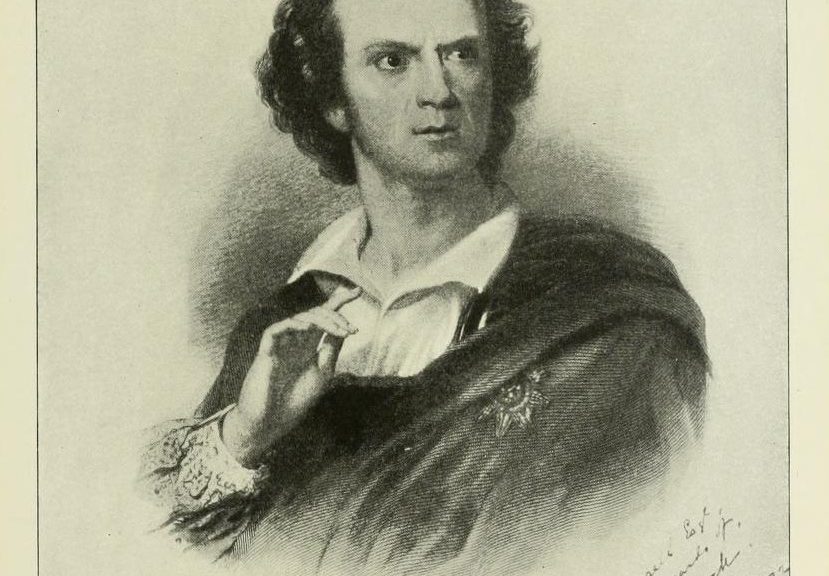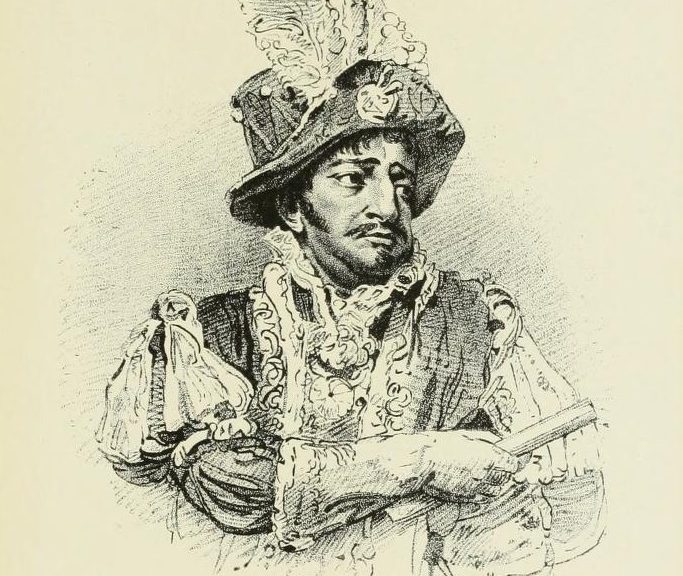Over the past two weeks, we looked at images of Shakespearean actors with costumes and props (see part one and part two). The images come from a 1900 book called the Shakespeare Rare Print Collection, edited by Seymour Eaton. These images help give a sense of what kinds of props they may have used at the time. This week, I am posting the final assortment of these images. Continue reading Even More Shakespearean Actors and Their Props
Tag Archives: history
More Shakespearean Actors and Their Props
Last week, we looked at some images of actors in costume for their roles in various Shakespeare plays. The images come from a 1900 book called the Shakespeare Rare Print Collection, edited by Seymour Eaton. These images help give a sense of what kinds of props they may have used at the time. This week, I have some more of these images. Continue reading More Shakespearean Actors and Their Props
Shakespearean Actors and Their Props
One of my many interests is how the props used in Shakespeare’s plays have evolved over time. One way to discover what props may have possibly appeared on stage is by looking at drawings and photographs of famous Shakespearean actors posing as their characters.
The following images come from a 1900 book called the Shakespeare Rare Print Collection, edited by Seymour Eaton. Most of these actors are from the 18th and 19th century. I cannot tell whether they are posing with actual props from their performances, or if they grabbed real items just to pose for these pictures, but at least it is a starting point. Continue reading Shakespearean Actors and Their Props
Order Up! Prop Stories To Go
Order Up! A Working Ziosk Prop – Jay Duckworth details how his shop built a working computer-ordering system for a booth at a Chili’s restaurant that appeared on stage. It took a combination of a cheap tablet, a 3D-printed housing, and some clever programming and graphic design to pull it off.
SYFY WIRE Fan Creators – The SYFY Channel has created a whole series of mini-documentaries about fans of sci-fi, fantasy, and horror, who build things related to their fandom. It’s a mix of propmakers, cosplayers, artists, and even a baker.
In Memoriam: John C. Taccone, IATSE Stagehand – John Taccone was a stagehand in New York City and a member of the New Amsterdam Theatre props crew for 21 years. His untimely passing earlier this month was memorialized on the Broadway marquee of the New Amsterdam.
The House That Mr. Mayer Built: Inside the Union-Busting Birth of the Academy Awards – This is an oldie, but it was new for me. The Oscars were originally created as a way to prevent the unionization of actors, writers, and directors in Hollywood. It didn’t work. Still, it is a good reminder of how spectacle can often be used to mask some deeper purpose. If you want to know more about the history of unionization amongst the Hollywood technicians, I covered a bit of it in my “Brief History of IATSE” article from a few years back. It was outright war at times.
Properties of the English Miracle Plays, 1906
The following comes from a 1906 master’s thesis by Allie V. Parks titled, “Stage Properties, Costumes, Scenery and Music of the English Miracle Plays.” These were religious pageants performed in England from the 10th to the 16th centuries. I’ve reformatted the text a bit to make it a little more readable, since it is already challenging trying to decipher the Middle English text:
We find in the stage direction mention of the stage properties as follows.
- In the Coventry Mysteries page 249 —Â and ther xal be a lytil oratory with stolys and cusshonys clenly be- seyn plyche as it were a counsel-hous.
- page 259-Â Here Petyr and John gon forth metyng with Symon leprows beryng a kan with watyr.
- page 261-Â Here Cryst enteryth into the hous with his dispiclis, and ete the Paschas lomb.
- page 277-Â Here he takyth the basyn and the towaly-
- p. 283 —Â and some dyagyaed in odyr garments with swerdys, gleynys, and other straunge wepons, with feyr and lanternys and torchis lyth.
- p 296-Â Here thei xal bete Jhesus about the hed and the body— and settyn hym on a stol, and castyn a cloth ovyr his face-
- p. 316Â And qwhem he is skorgyd, thei put upon him a cloth of sylk, and settyn hym on a stol, and puttyn a kroune of thornys on hese hed with forkys; and the Jewys knelyng to Cryst, taking hym a septer and skorning him, and than thei xal pullyn of the purpyl clothe, and don on ageyn his owyn clothis; and leyn the crosse in hese necke to berynt, and drawyn hym forth with ropys.
- p. 335– a ladder to take Cryst from the cross.
- p. 337–Â and leve the Maryes at the Sephulchere.
- p. 336Â Here thei shall leyn Cryst in his grave.
The last named reference would seem to indicate that some sort of grave or tomb was one of the stage properties of this play.
- p. 332–Pylat, Annas and Cayphas go to ther skaffaldys.
- p. 25-Â Then God douthe make the woman of the ribbe of Adam.
It would seem that a rib-bone was actually used in the creation scene. On p 388 of Chambers ‘Medieval Stage’ in the inventory of the Company of Grocers, Whitsun Plays, this item also relating to the rib occurs, A Rybbe colleyrd Red.
Another reference to the use of swords on the stage, occurs in the stage directions of the ‘Chester Plays,’ Early English Text Society edition, page 81. Â “Here Abraham takes and binds his sonne Isaake upon the alter, and makes a signe as though he would cut of his head with the sword; then the angell comes and takes the ends and stayeth it saying”—
In the Chester Plays by the Shakespeare Society p. 65, Heare Abraham taketh a sword and fier. In this play also Abraham is directed to take a “sorde” and make as though he would cut of his son’s head.
Chambers in The Mediaeval Stage, p. 377, from “The Hall book of the Corporation of at Leicester” gives, 1546-7 Pd. for makynge of a sworde & payntinge of the same for Harroode. This sword was probably made of wood, as it required painting, and on page 345- For the hyre of a sworde. On page 345 are also items of expense, For two bagges of leder, and For gunpowder.
Parks, Allie V. “Stage Properties, Costumes, Scenery and Music of the English Miracle Plays.” Thesis. University of Illinois, 1906. Internet Archive, 29 Oct. 2013. Web. 18 Oct. 2016. <https://archive.org/details/stagepropertiesc00park>.


